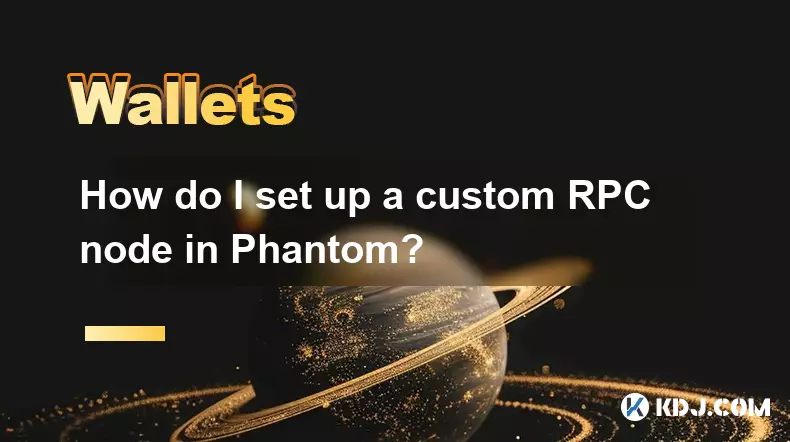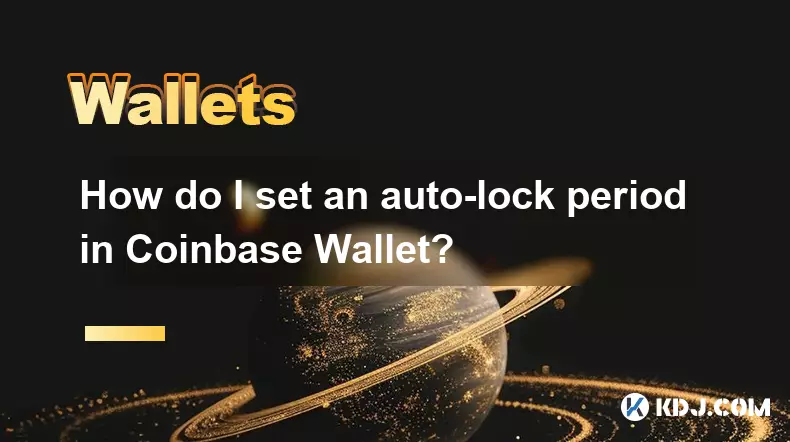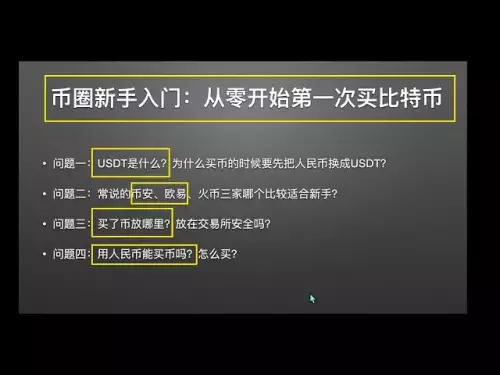-
 bitcoin
bitcoin $113137.862908 USD
0.65% -
 ethereum
ethereum $4107.436072 USD
-1.96% -
 xrp
xrp $2.908808 USD
2.59% -
 tether
tether $1.000294 USD
0.01% -
 bnb
bnb $1010.914842 USD
-1.12% -
 solana
solana $210.653310 USD
-2.16% -
 usd-coin
usd-coin $0.999776 USD
-0.01% -
 dogecoin
dogecoin $0.239360 USD
-0.04% -
 tron
tron $0.337849 USD
0.37% -
 cardano
cardano $0.807698 USD
-0.61% -
 hyperliquid
hyperliquid $45.387447 USD
0.61% -
 chainlink
chainlink $21.408287 USD
-0.92% -
 ethena-usde
ethena-usde $1.000509 USD
-0.04% -
 avalanche
avalanche $32.634682 USD
-4.77% -
 sui
sui $3.349772 USD
-0.19%
How do I set up a custom RPC node in Phantom?
Connect your Phantom wallet to a custom RPC node for faster, more reliable Solana interactions—ideal for dApps, NFT mints, and private transactions.
Sep 24, 2025 at 09:01 am

Connecting a Custom RPC Node to Phantom Wallet
1. Open the Phantom wallet browser extension or mobile application and ensure you are logged in securely. Navigate to the settings menu, typically represented by a gear icon located in the upper right corner of the interface.
2. Within the settings, locate the 'Network' or 'RPC Settings' section. By default, Phantom connects to public Solana endpoints, but users have the option to switch to a custom node for improved performance or privacy.
3. Select the option labeled 'Custom RPC' or 'Add Custom Network.' This will prompt a text field where you can input the HTTP or HTTPS URL of your chosen RPC endpoint. Ensure the URL begins with https:// and is provided by a trusted infrastructure provider such as QuickNode, Alchemy, or your own self-hosted node.
4. After entering the RPC URL, confirm the chain ID corresponds to the Solana network you intend to interact with—mainnet-beta, devnet, or testnet. Mismatched configurations may result in transaction failures or incorrect balance displays.
5. Save the configuration and exit the settings. Phantom will now route all blockchain queries through your specified RPC node. You can verify the connection by initiating a token transfer or checking recent block data within the app.
Benefits of Using a Custom RPC in Web3 Applications
1. Relying on a private or dedicated RPC endpoint reduces dependency on shared public infrastructure, minimizing latency during high-traffic periods on the Solana network. This is particularly valuable when participating in NFT mints or decentralized exchange launches.
2. Improved reliability and uptime are key advantages when using enterprise-grade node providers. Public gateways occasionally face outages or rate limiting, which can disrupt wallet interactions and smart contract calls.
3. Developers integrating Phantom into dApps benefit from predictable API response times when backend services communicate through a controlled RPC channel. This consistency enhances user experience during critical operations like signing and broadcasting transactions.
4. Privacy-conscious users gain increased control over metadata exposure. Public RPCs may log IP addresses and request patterns, while self-hosted or permissioned nodes allow stricter data handling policies aligned with operational security standards.
5. Teams managing large-scale token distributions or validator operations often deploy internal RPC clusters. Connecting Phantom to these systems enables seamless monitoring and execution without competing for bandwidth on community-run servers.
Troubleshooting Common RPC Configuration Issues
1. If transactions fail to confirm after setting up a custom node, double-check the RPC URL for typos or outdated domains. A single character error can redirect requests to non-functional endpoints.
2. Ensure the node supports WebSocket connections if your use case involves real-time updates, such as tracking live order book changes or stake pool rewards. Some lightweight RPC services only handle HTTP POST requests.
3. Clear the browser cache or restart the mobile app if Phantom continues displaying old network data. Stale caches may retain previous blockchain states even after switching RPC sources.
4. Monitor response times using developer tools or third-party dashboards. Abnormally slow query speeds could indicate network congestion, insufficient node resources, or geographical distance between client and server.
5. Contact your RPC provider’s support team if errors persist. Reputable services offer status pages and diagnostic tools to identify downtime, authentication problems, or plan limitations affecting connectivity.
Frequently Asked Questions
Can I use multiple custom RPCs simultaneously in Phantom?Phantom allows only one active RPC connection at a time. However, users can save different network profiles and switch between them manually depending on their current task or environment.
Do I need technical expertise to maintain my own Solana RPC node?Running a full Solana validator or RPC node requires significant hardware resources, Linux system knowledge, and ongoing maintenance. Most individuals opt for hosted solutions unless they operate at institutional scale.
Will changing the RPC affect my wallet's private keys or asset ownership?No. The RPC node acts solely as a communication gateway to the blockchain. Your private keys remain stored locally, and altering the node does not impact asset control or security.
Are there costs associated with using premium RPC providers?Yes. While basic access may be free, high-throughput applications require paid plans offering guaranteed performance, enhanced security, and dedicated support. Pricing varies based on request volume and service level agreements.
Disclaimer:info@kdj.com
The information provided is not trading advice. kdj.com does not assume any responsibility for any investments made based on the information provided in this article. Cryptocurrencies are highly volatile and it is highly recommended that you invest with caution after thorough research!
If you believe that the content used on this website infringes your copyright, please contact us immediately (info@kdj.com) and we will delete it promptly.
- Flare Ignites XRP DeFi with FXRP: A New Era for XRP?
- 2025-09-25 16:45:15
- Naver, Dunamu, and Stablecoins: A Korean Fintech Tango
- 2025-09-25 16:25:13
- Solana, ETFs, and Treasuries: A New York Minute on Crypto's Next Big Moves
- 2025-09-25 17:05:16
- BullZilla, Solana, Monero: Navigating the Crypto Roar in '25
- 2025-09-25 17:05:16
- Cardano (ADA): Price Momentum and Ecosystem Growth Catalyzed by Foundation Initiatives
- 2025-09-25 17:10:01
- Shiba Inu, Remittix, and Price Predictions: What's the Buzz?
- 2025-09-25 17:10:01
Related knowledge

How do I view smart contract interaction history in Coinbase Wallet?
Sep 24,2025 at 01:36am
Accessing Smart Contract Interaction History in Coinbase Wallet1. Open the Coinbase Wallet application on your mobile device and log in using your cre...

How do I use the token swap feature in Coinbase Wallet?
Sep 24,2025 at 05:00pm
Understanding Token Swaps in Coinbase Wallet1. The token swap feature in Coinbase Wallet enables users to exchange one cryptocurrency for another dire...

How do I participate in governance voting in Coinbase Wallet?
Sep 25,2025 at 01:55pm
Understanding Market Volatility in the Crypto Space1. Cryptocurrency markets are known for their extreme price fluctuations, often driven by sentiment...

How do I set up a custom RPC node in Coinbase Wallet?
Sep 24,2025 at 12:00pm
Understanding Custom RPC Nodes in Coinbase Wallet1. A custom RPC (Remote Procedure Call) node allows users to connect their Coinbase Wallet to a block...

How do I manage multiple assets in Coinbase Wallet?
Sep 23,2025 at 10:00am
Understanding Multi-Asset Support in Coinbase Wallet1. Coinbase Wallet allows users to store a wide variety of digital assets beyond just Bitcoin and ...

How do I set an auto-lock period in Coinbase Wallet?
Sep 23,2025 at 01:18pm
Understanding Auto-Lock Features in Coinbase Wallet1. The Coinbase Wallet does not offer a direct 'auto-lock period' setting like some traditional ban...

How do I view smart contract interaction history in Coinbase Wallet?
Sep 24,2025 at 01:36am
Accessing Smart Contract Interaction History in Coinbase Wallet1. Open the Coinbase Wallet application on your mobile device and log in using your cre...

How do I use the token swap feature in Coinbase Wallet?
Sep 24,2025 at 05:00pm
Understanding Token Swaps in Coinbase Wallet1. The token swap feature in Coinbase Wallet enables users to exchange one cryptocurrency for another dire...

How do I participate in governance voting in Coinbase Wallet?
Sep 25,2025 at 01:55pm
Understanding Market Volatility in the Crypto Space1. Cryptocurrency markets are known for their extreme price fluctuations, often driven by sentiment...

How do I set up a custom RPC node in Coinbase Wallet?
Sep 24,2025 at 12:00pm
Understanding Custom RPC Nodes in Coinbase Wallet1. A custom RPC (Remote Procedure Call) node allows users to connect their Coinbase Wallet to a block...

How do I manage multiple assets in Coinbase Wallet?
Sep 23,2025 at 10:00am
Understanding Multi-Asset Support in Coinbase Wallet1. Coinbase Wallet allows users to store a wide variety of digital assets beyond just Bitcoin and ...

How do I set an auto-lock period in Coinbase Wallet?
Sep 23,2025 at 01:18pm
Understanding Auto-Lock Features in Coinbase Wallet1. The Coinbase Wallet does not offer a direct 'auto-lock period' setting like some traditional ban...
See all articles










































































